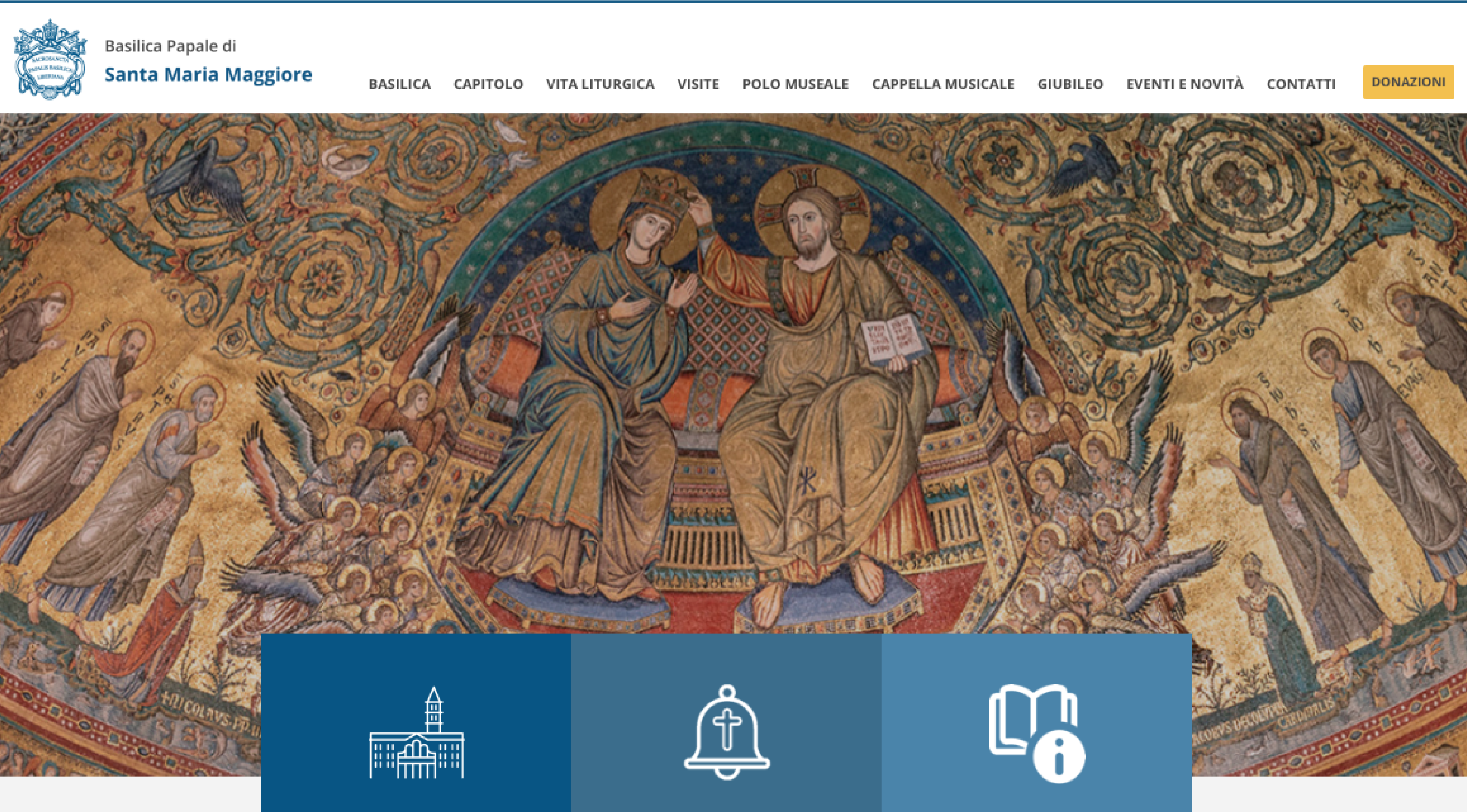(ZENIT News / Vatican City, 07.10.2023).- A few months after the launching of its profiles on social networks, the Papal Basilica of Saint Mary Major expands its digital presence offering pilgrims a new Web portal: www.basilicasantamariamaggiore.va. The Website went online of Saturday, October 7, liturgical memorial of the Most Holy Virgin of the Rosary.
The site, with a renewed graphic design, offers a rich selection of updated and quality contents in seven languages: Italian, English, Spanish, French, German, Portuguese and Polish.
It is a functional portal, optimized to be easily accessible from any sort of device and able to guarantee a pleasing and fluid user experience. The users can navigate through two macro sections: a liturgical-pastoral one and a historical-artistic one.
A new “visitor’s card” for the Web able to offer a vast panoramic view of the identity and pastoral care of the Basilica that, in view, as well, of the Jubilee 2025, will make it possible to reserve visits to the Liberian Museum Center (Historical Museum, Archaeological Excavations, Loggia, Hall of Popes and the Bernini Steps); enabling one to find all contact details, useful directions, links to social pages and indications to support the Basilica’s activities. In addition, there will be pages dedicated to the Chapter and to the Liberian Musical Chapel.
The desire of Monsignor Rolandas Makrickas, the Basilica’s Commissioner Extraordinary, is “to consolidate, also through this new virtual space, the real bond that for centuries united the Basilica with the faithful, as well as to reach with greater facility those that are more distant and, perhaps, less socialized.”
With the new multilingual site, the Basilica intends to share its daily life in a completely renewed way, conscious that, as Pope Francis affirms (in the Preface to the book “The Church in the Digital World,” edited by Fabio Bolzetta), “virtuality will never be able to substitute the beauty of face -to-face encounters. But the digital world is inhabited and must be inhabited by Christians.”
With the objective to reduce social and geographical distances, the decision is to offer an agile and intuitive portal that can be read and consulted from computers and mobile devices. Supported by a large gamut of photographic galleries, it will tell the history of the Basilica that guards the image of the much loved Salus Populi Romani and continues being a safe port for “virtual” faithful worldwide.



